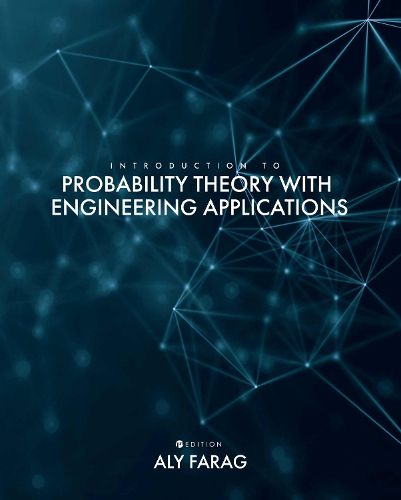Readings Newsletter
Become a Readings Member to make your shopping experience even easier.
Sign in or sign up for free!
You’re not far away from qualifying for FREE standard shipping within Australia
You’ve qualified for FREE standard shipping within Australia
The cart is loading…






Introduction to Probability Theory with Engineering Applications provides students with a solid foundation in probability theory, which deals with the modeling of uncertainty, and illuminates several modern applications of probability in engineering, physics and data analysis.
The text is organized into five chapters and three appendices. The opening chapter introduces the notion of probability as a model or representation for the uncertainty associated with statistical experiments. In additional chapters, students learn about random variables through explanations of discrete and continuous variables, conditional distribution, and statistical distribution. Students examine functions of one random variable, two random variables, and extensions to multivariable distributions. The final chapter covers random processes.
Helpful appendices include six computer laboratories that correspond with the content in Chapters 2-5, assessment and review questions for each chapter, and basic results from linear algebra.
The book is an ideal resource for courses in engineering, computer science, biomedicine, physics, and mathematics. It is also an excellent text for researchers seeking an overview in applied probability theory. It is assumed readers have a background in introductory calculus and computer programming.
$9.00 standard shipping within Australia
FREE standard shipping within Australia for orders over $100.00
Express & International shipping calculated at checkout
Introduction to Probability Theory with Engineering Applications provides students with a solid foundation in probability theory, which deals with the modeling of uncertainty, and illuminates several modern applications of probability in engineering, physics and data analysis.
The text is organized into five chapters and three appendices. The opening chapter introduces the notion of probability as a model or representation for the uncertainty associated with statistical experiments. In additional chapters, students learn about random variables through explanations of discrete and continuous variables, conditional distribution, and statistical distribution. Students examine functions of one random variable, two random variables, and extensions to multivariable distributions. The final chapter covers random processes.
Helpful appendices include six computer laboratories that correspond with the content in Chapters 2-5, assessment and review questions for each chapter, and basic results from linear algebra.
The book is an ideal resource for courses in engineering, computer science, biomedicine, physics, and mathematics. It is also an excellent text for researchers seeking an overview in applied probability theory. It is assumed readers have a background in introductory calculus and computer programming.